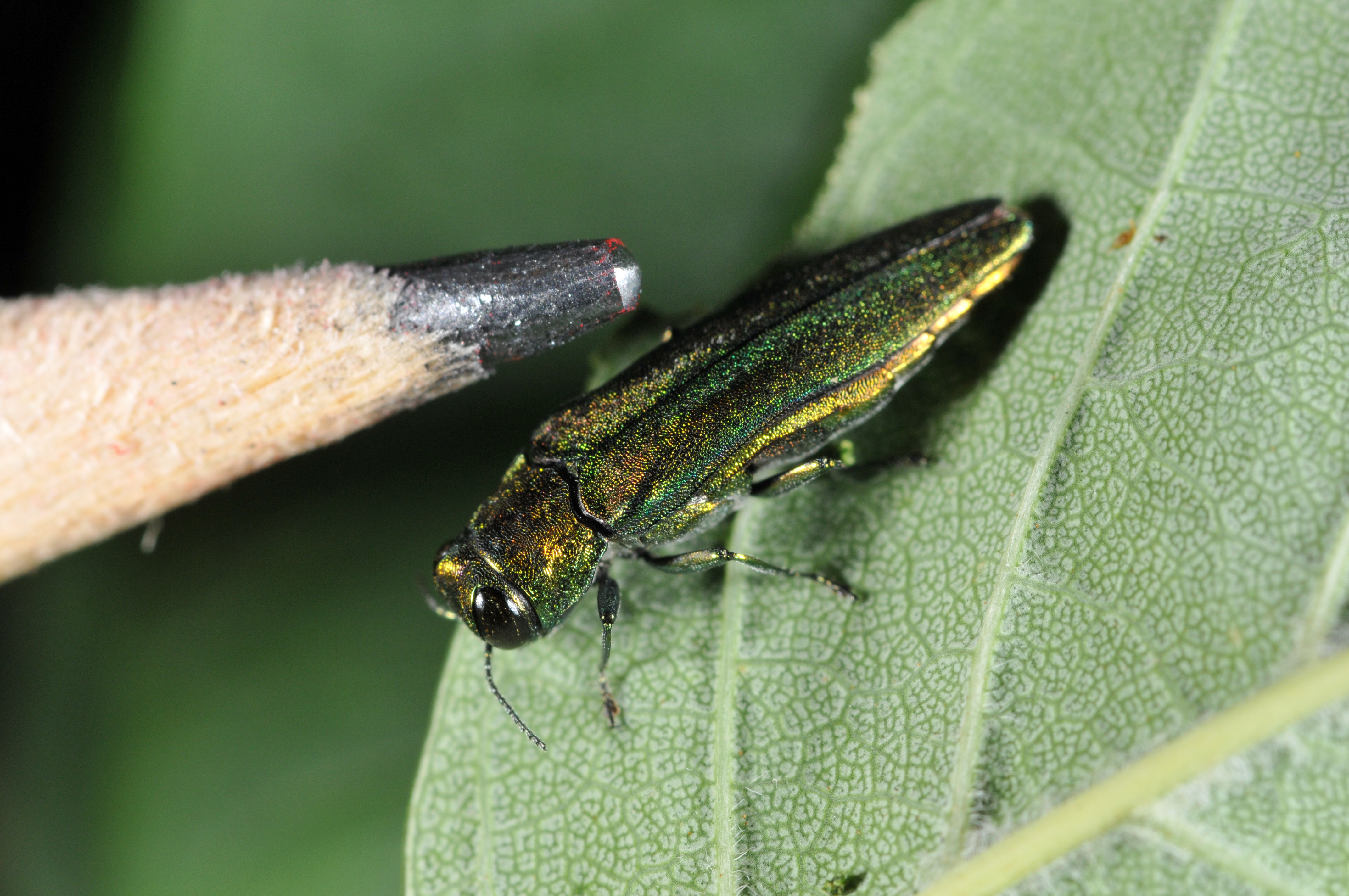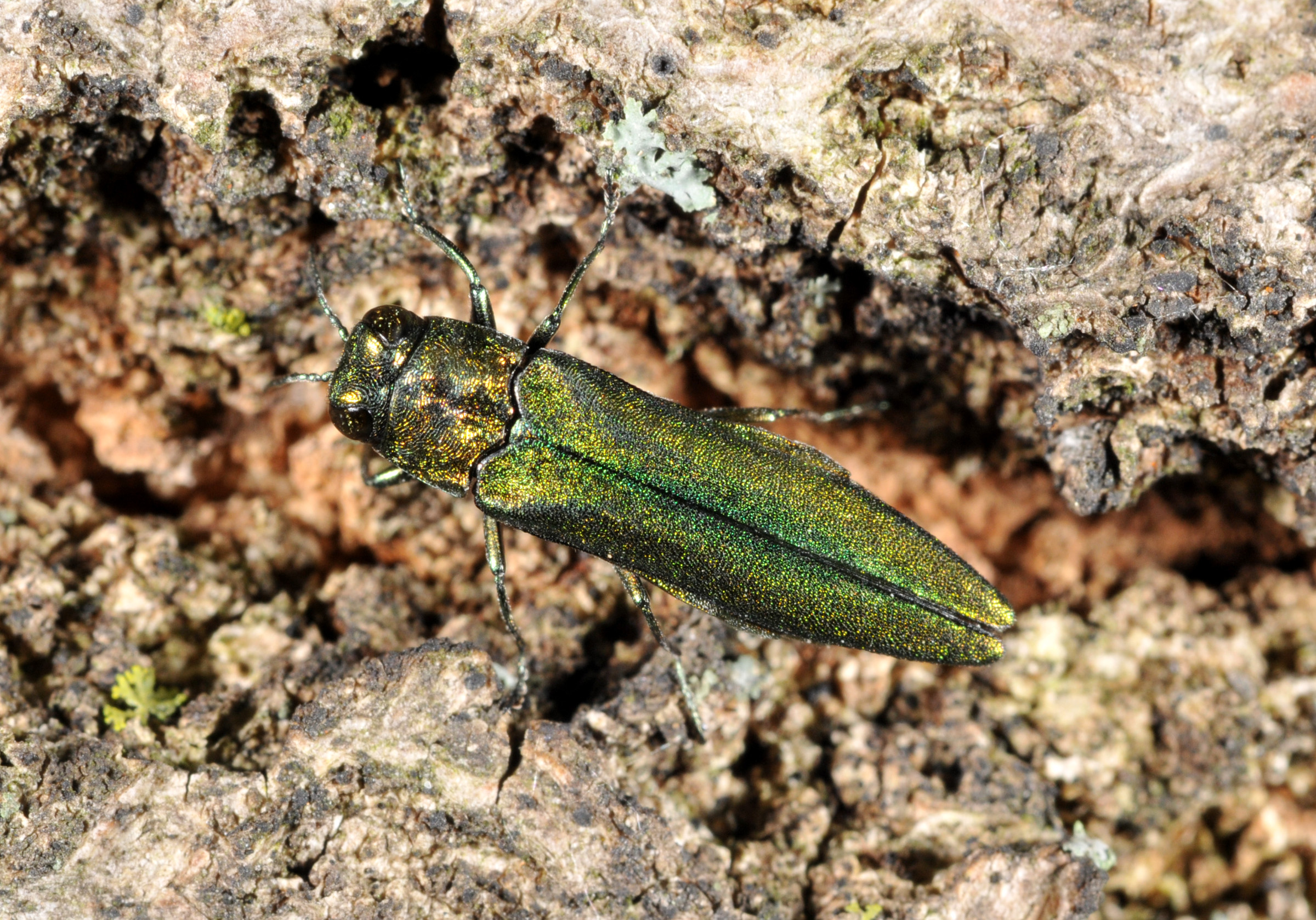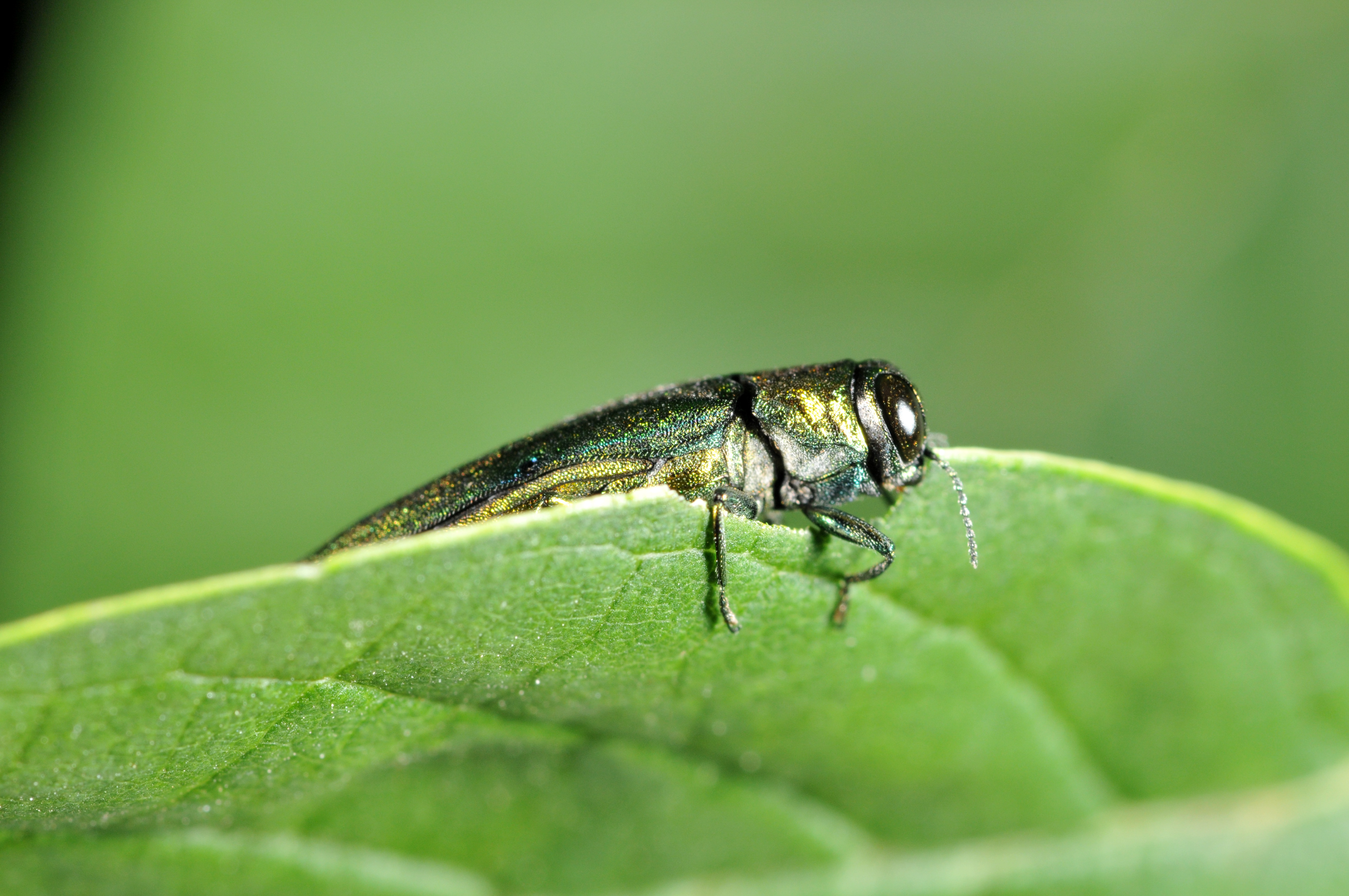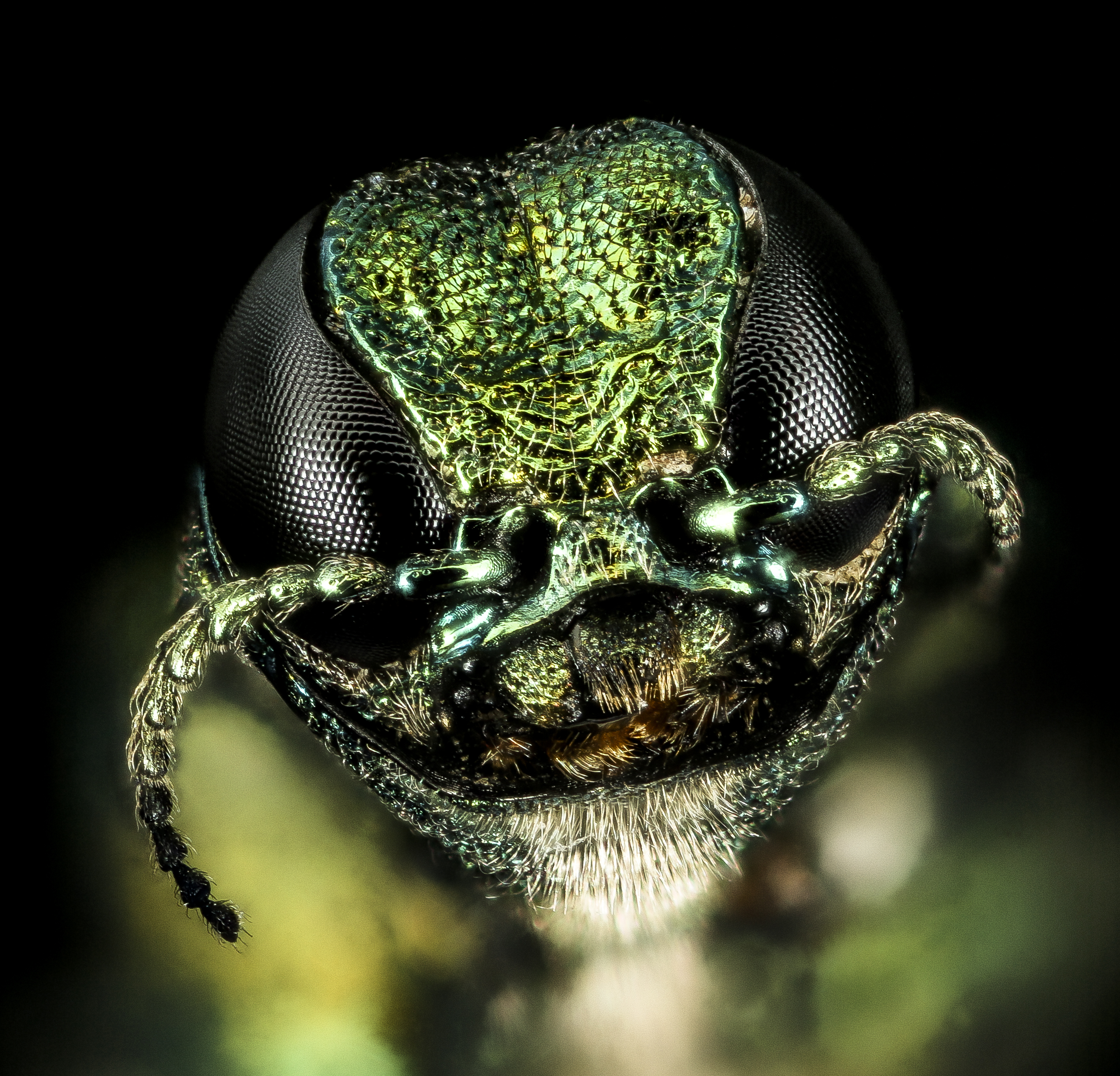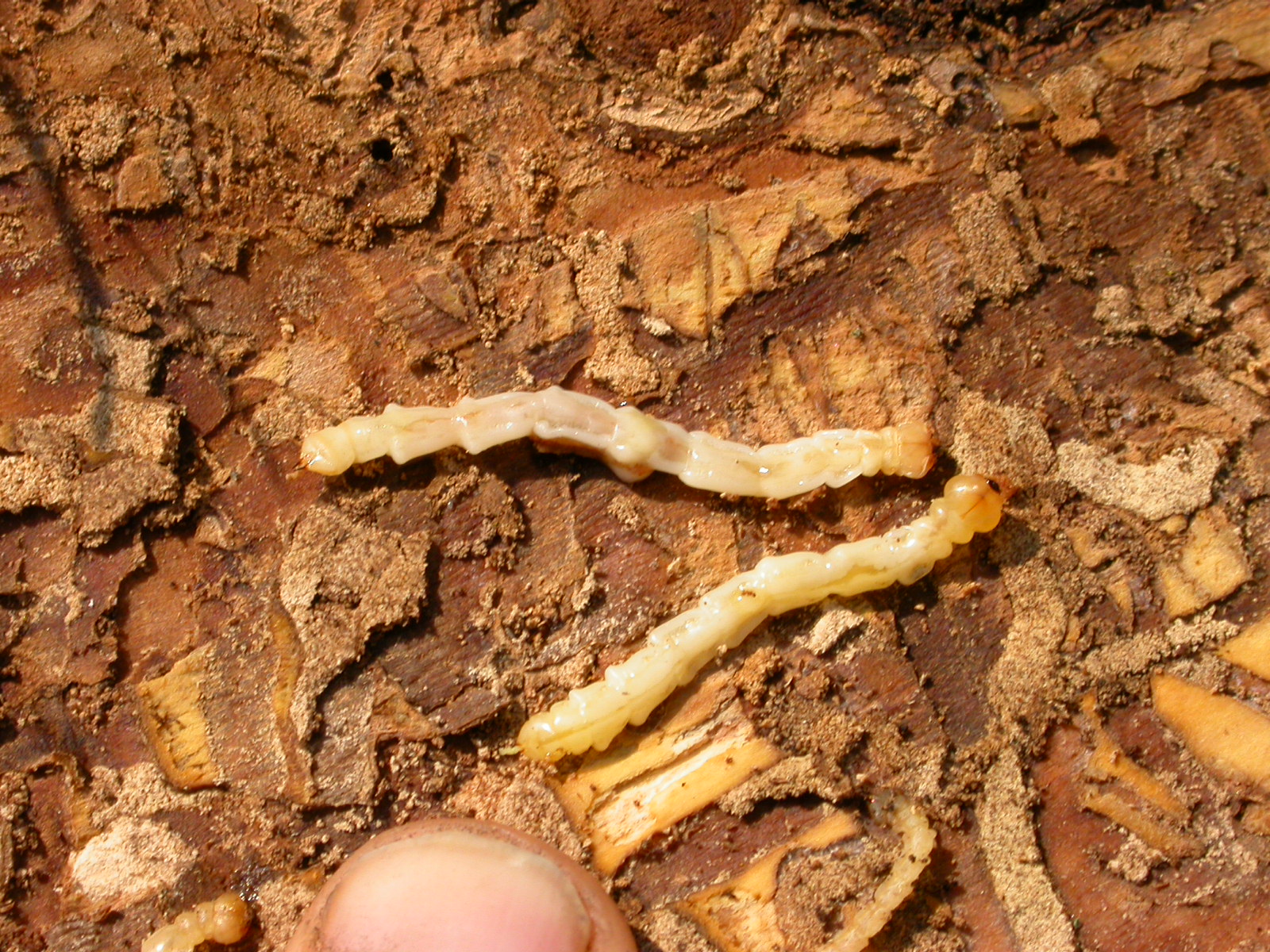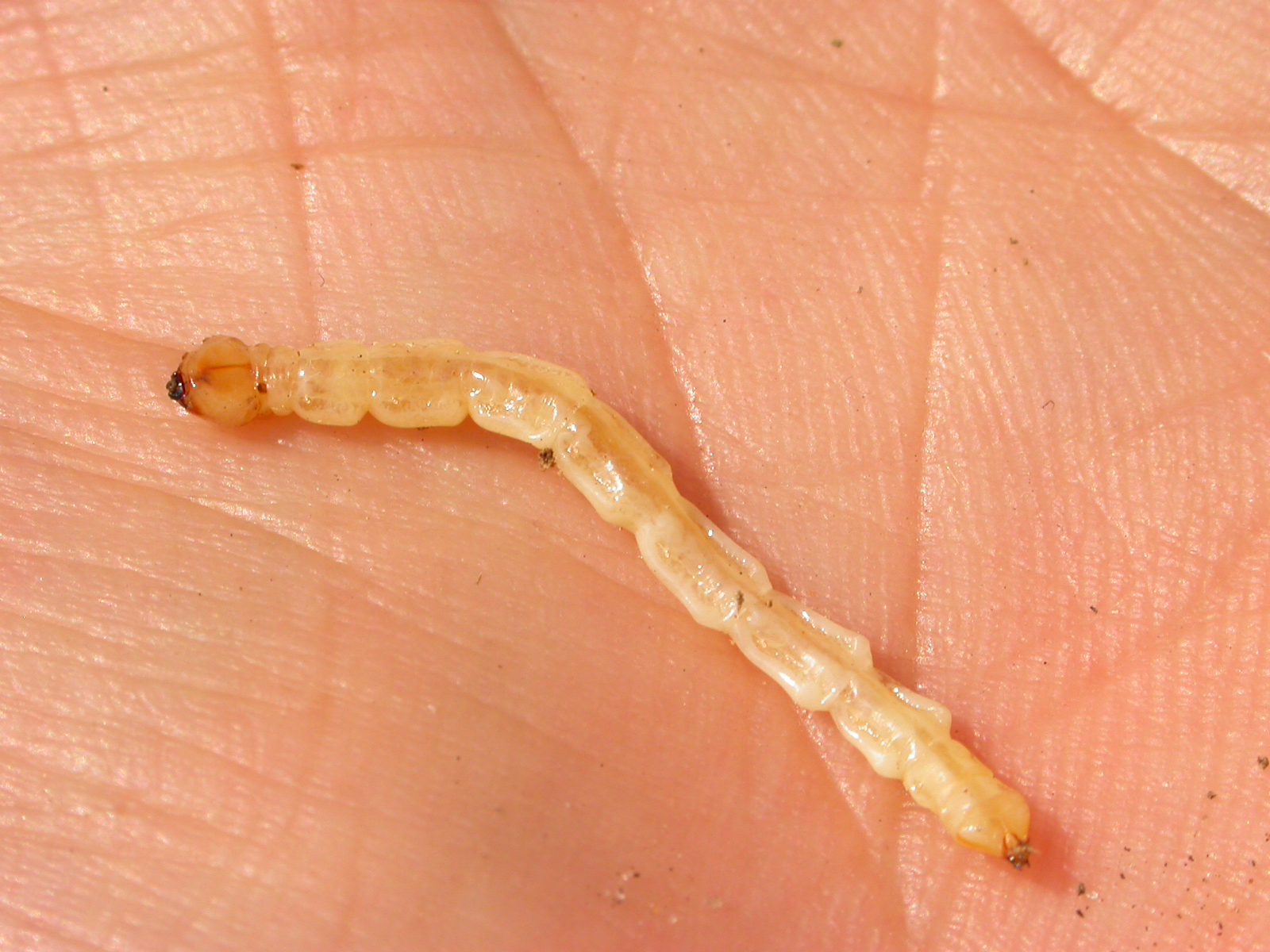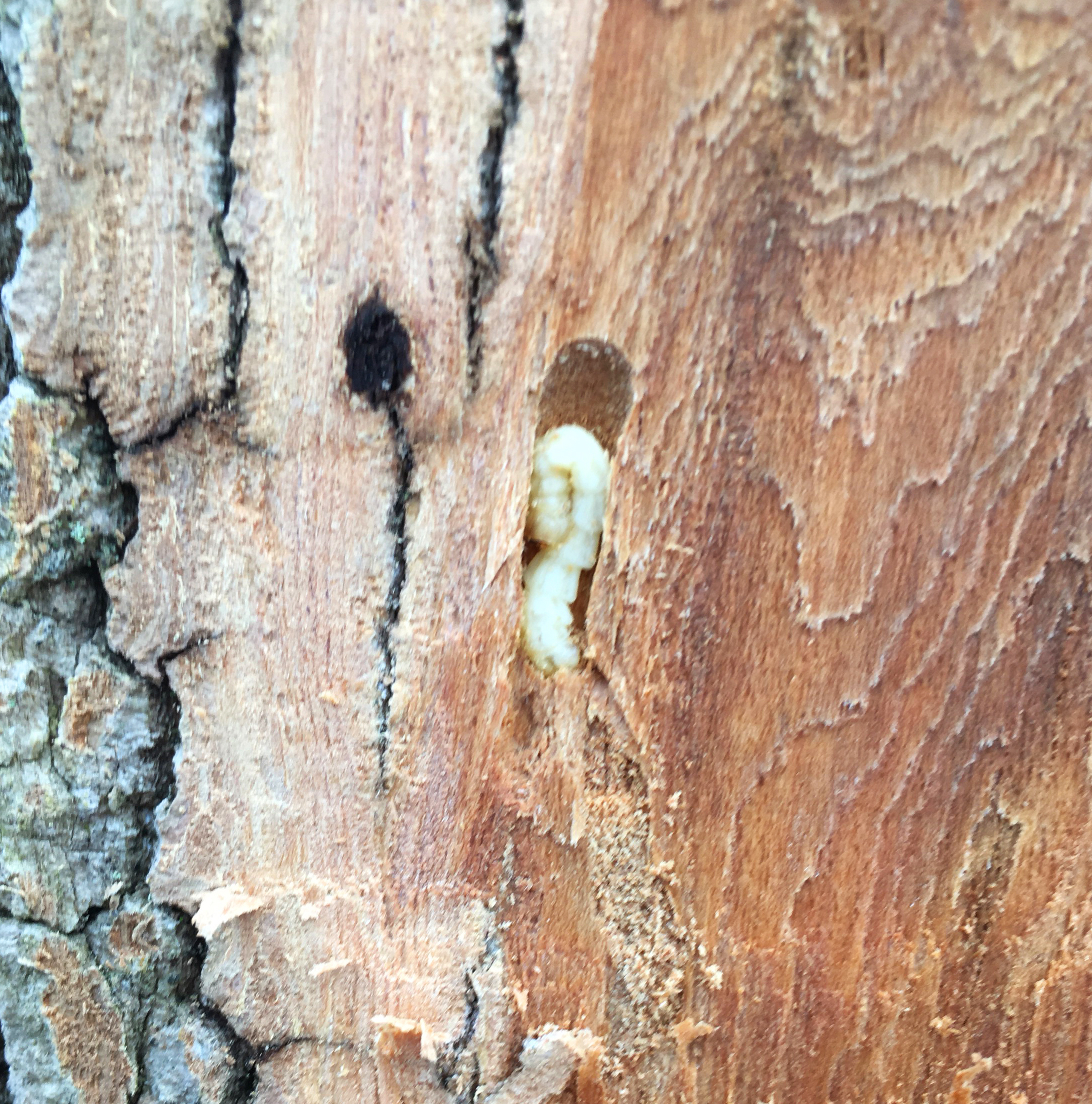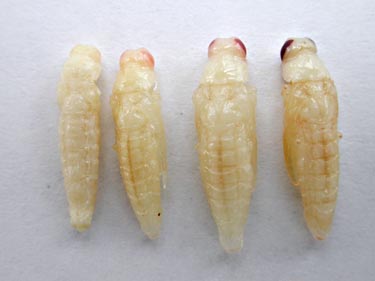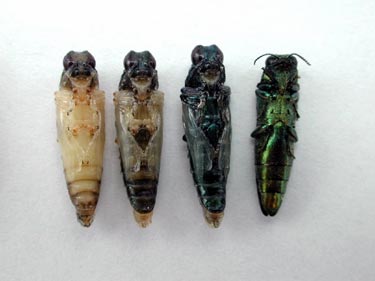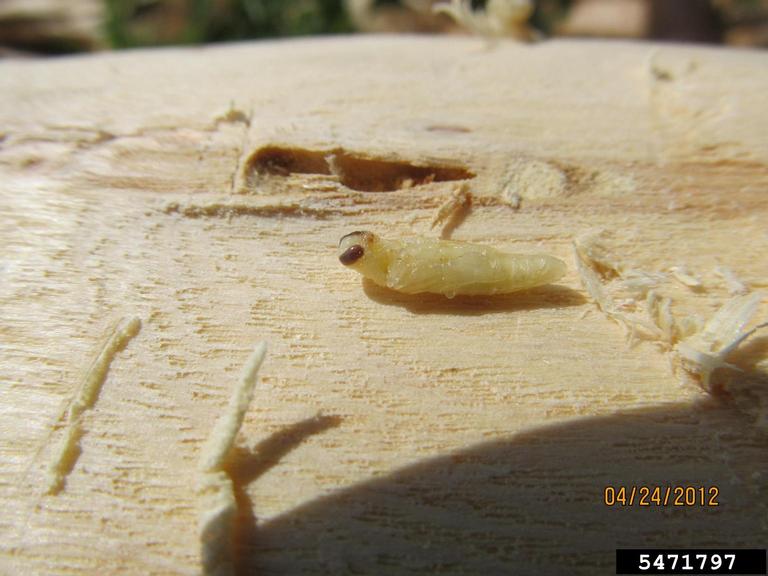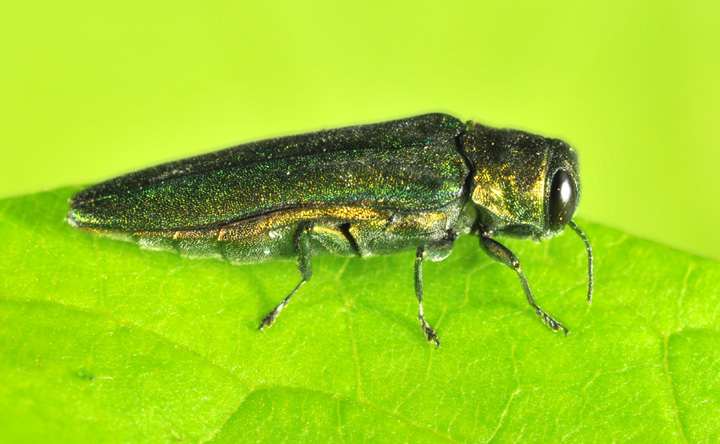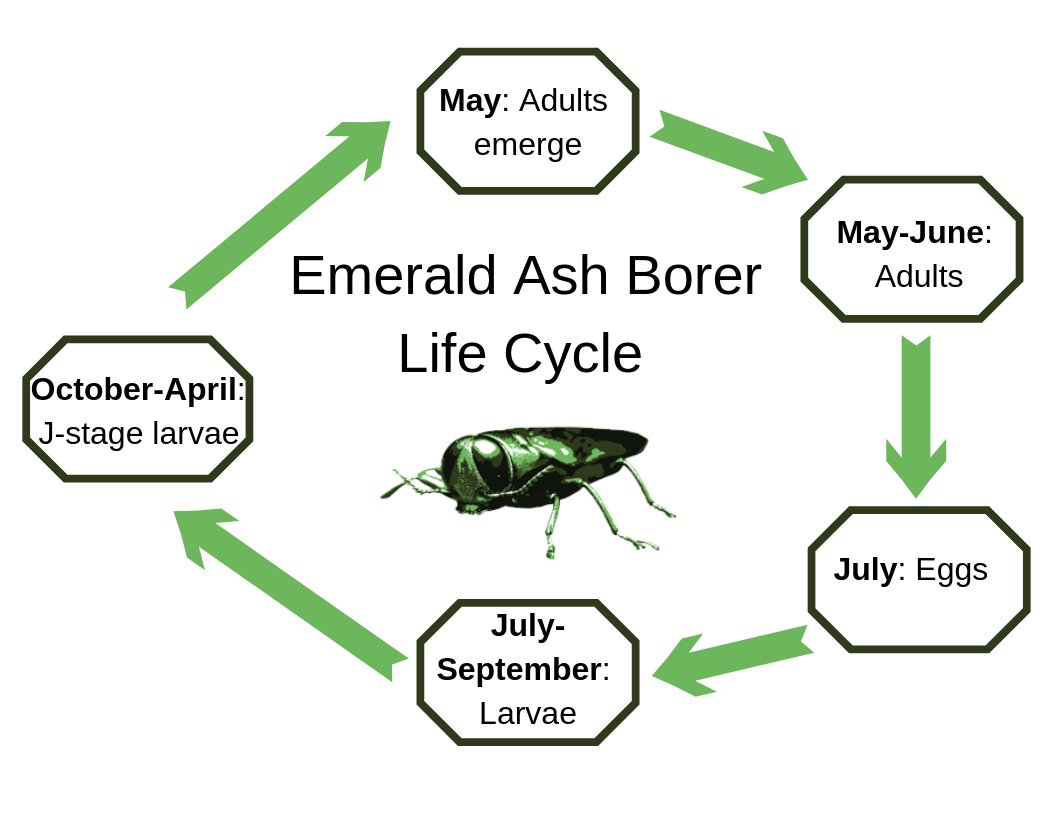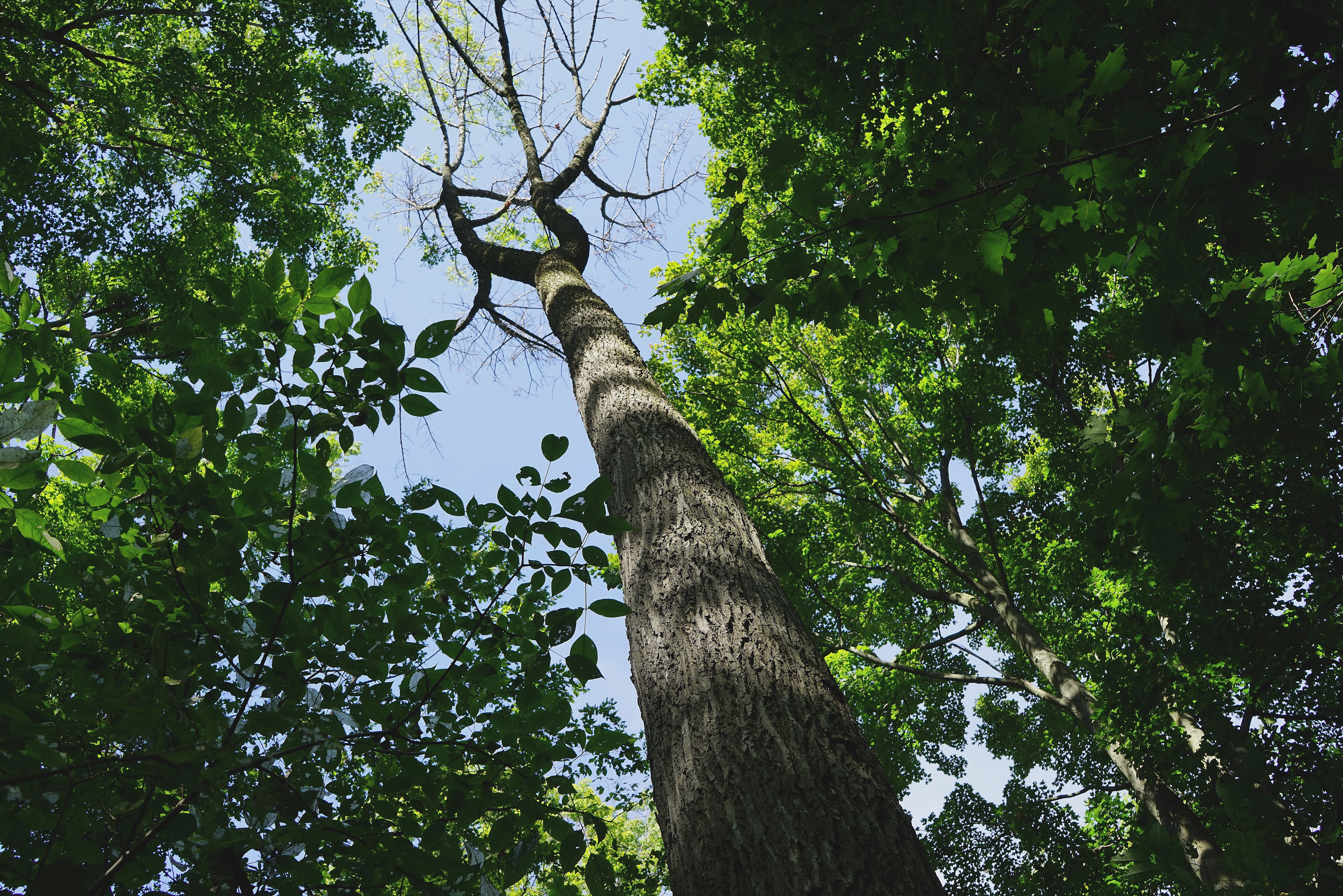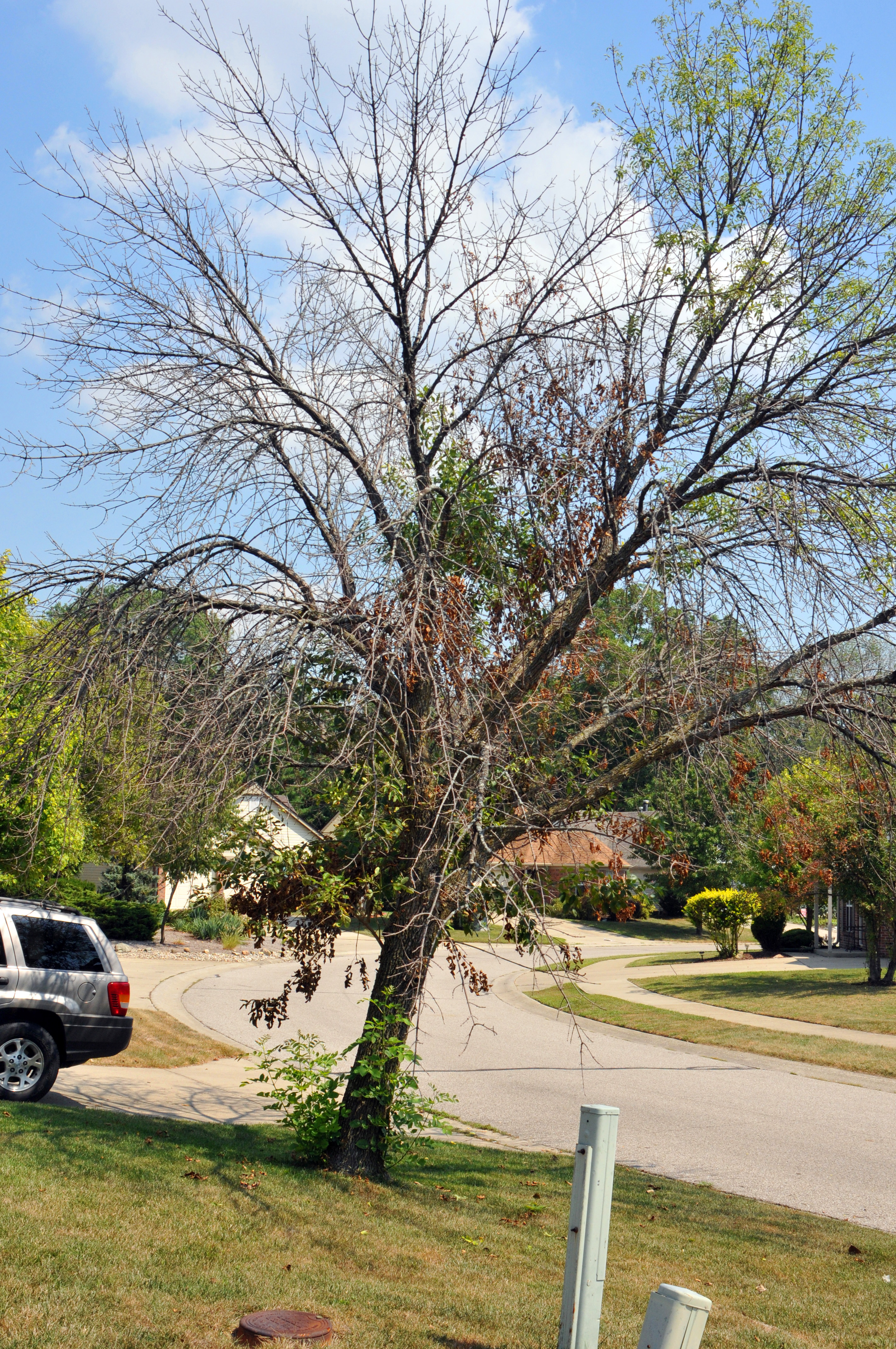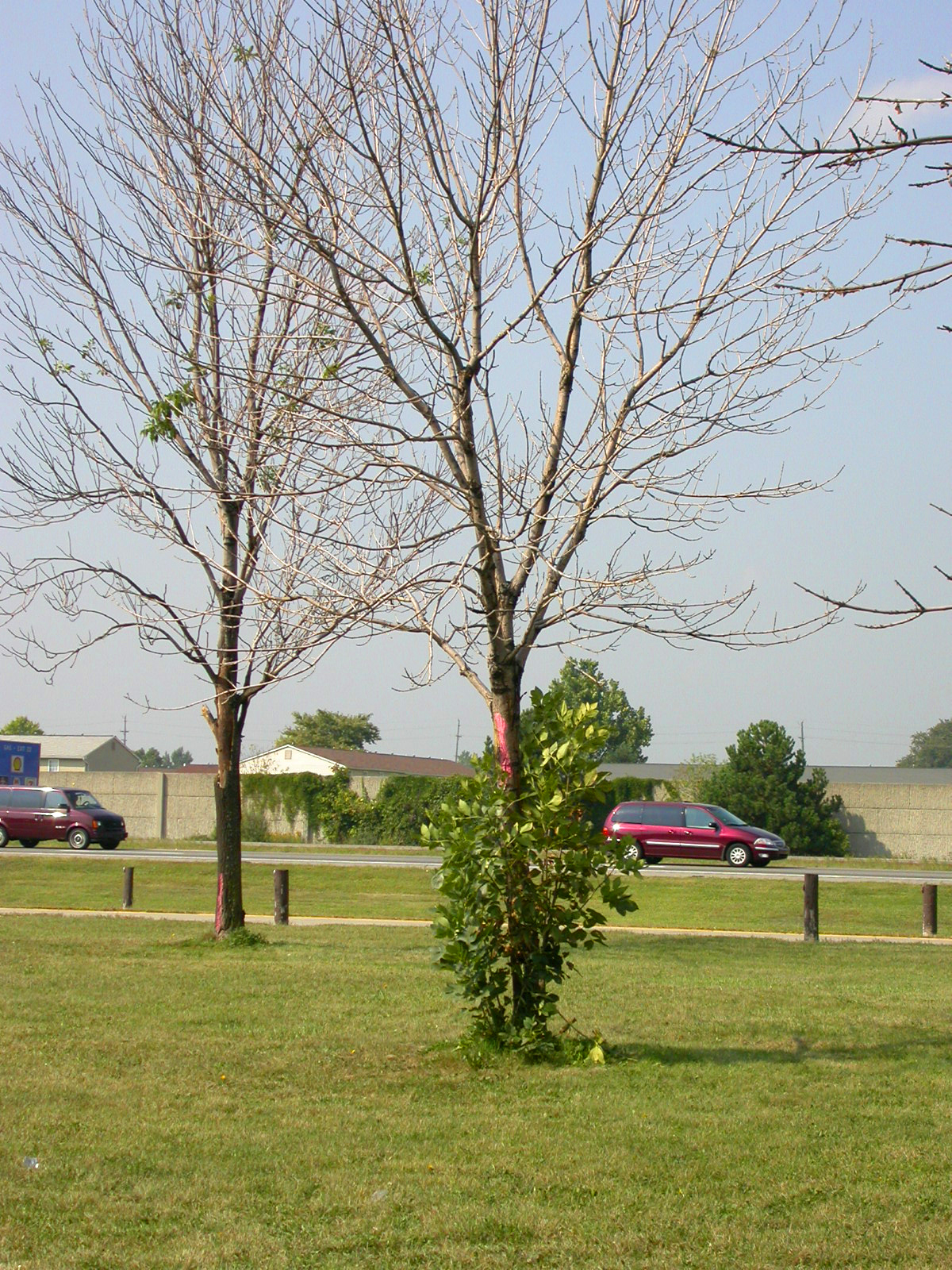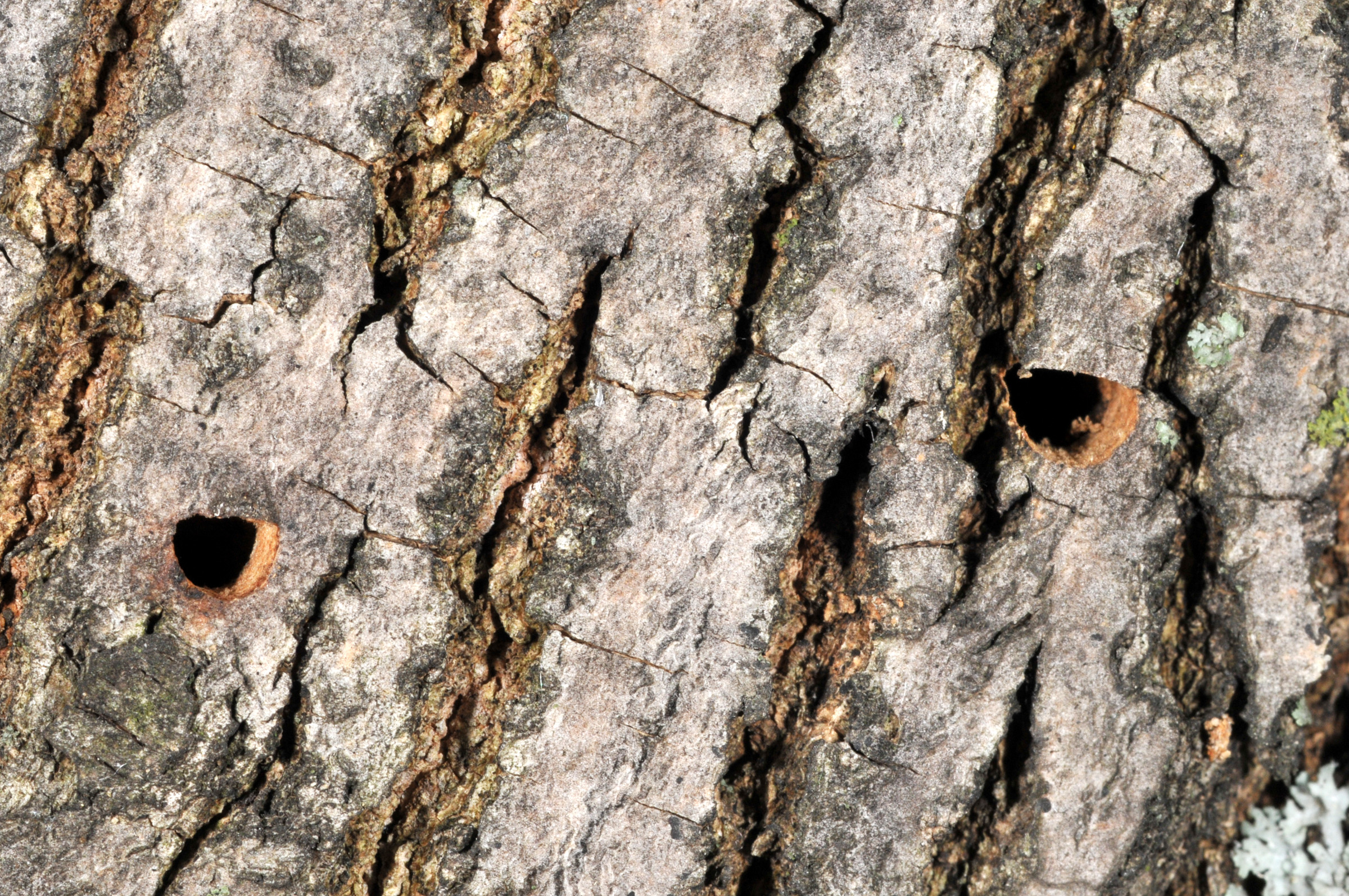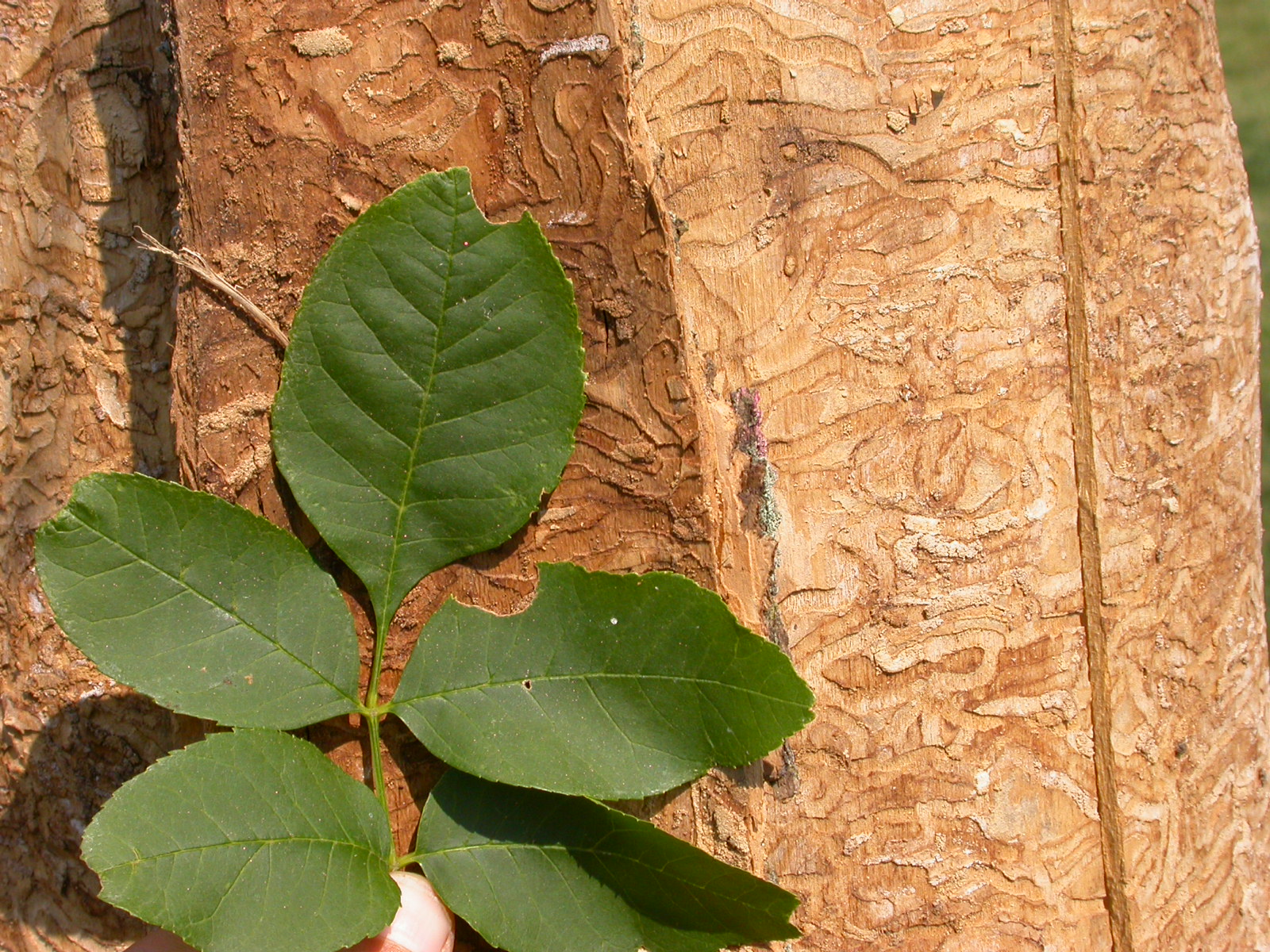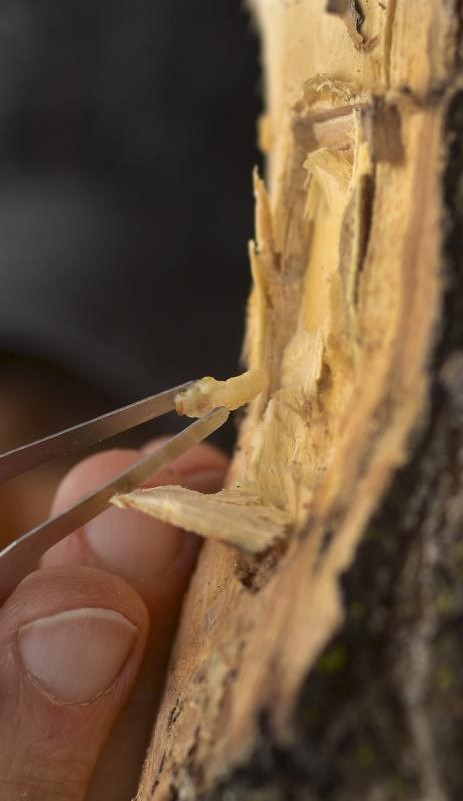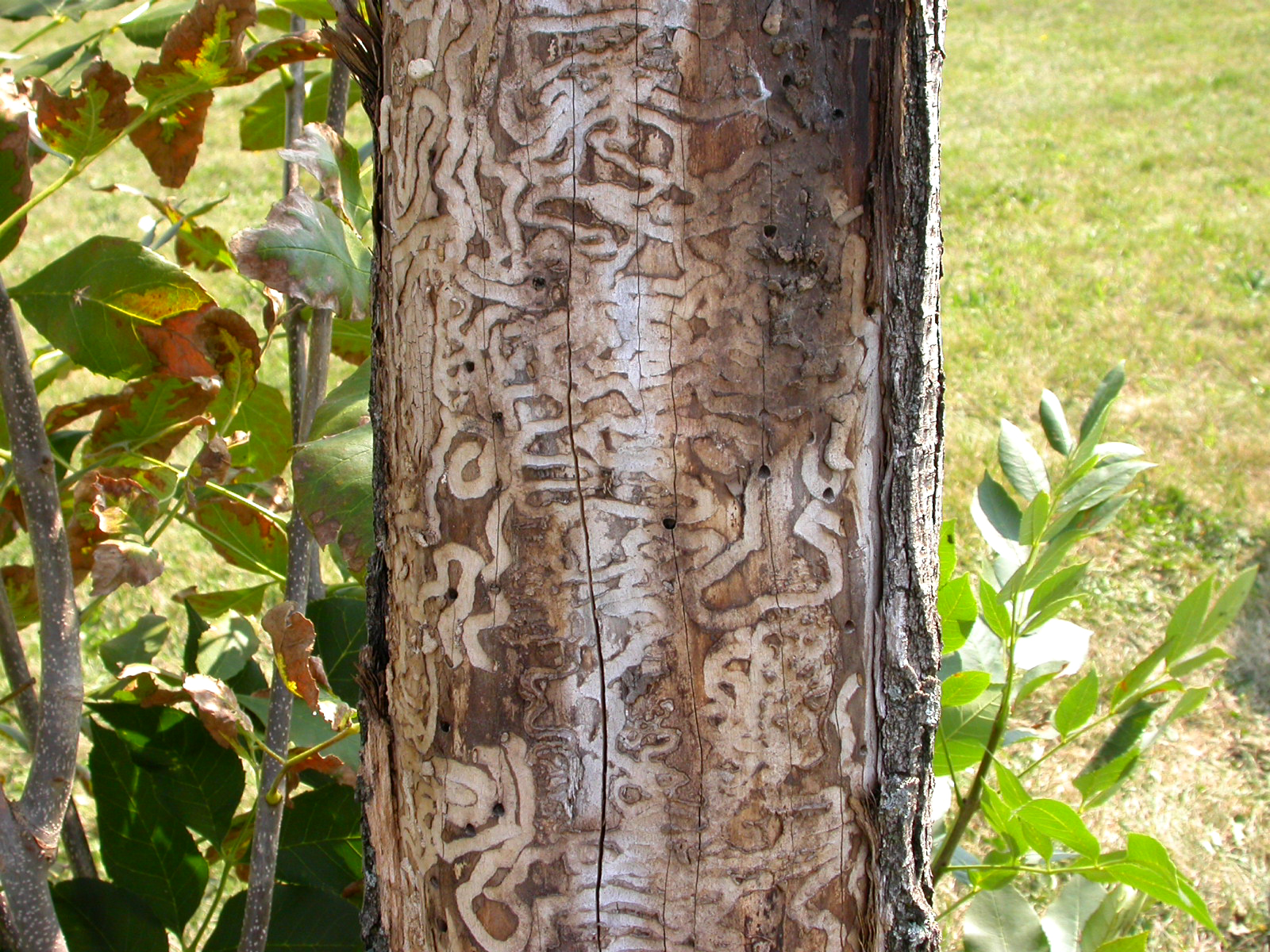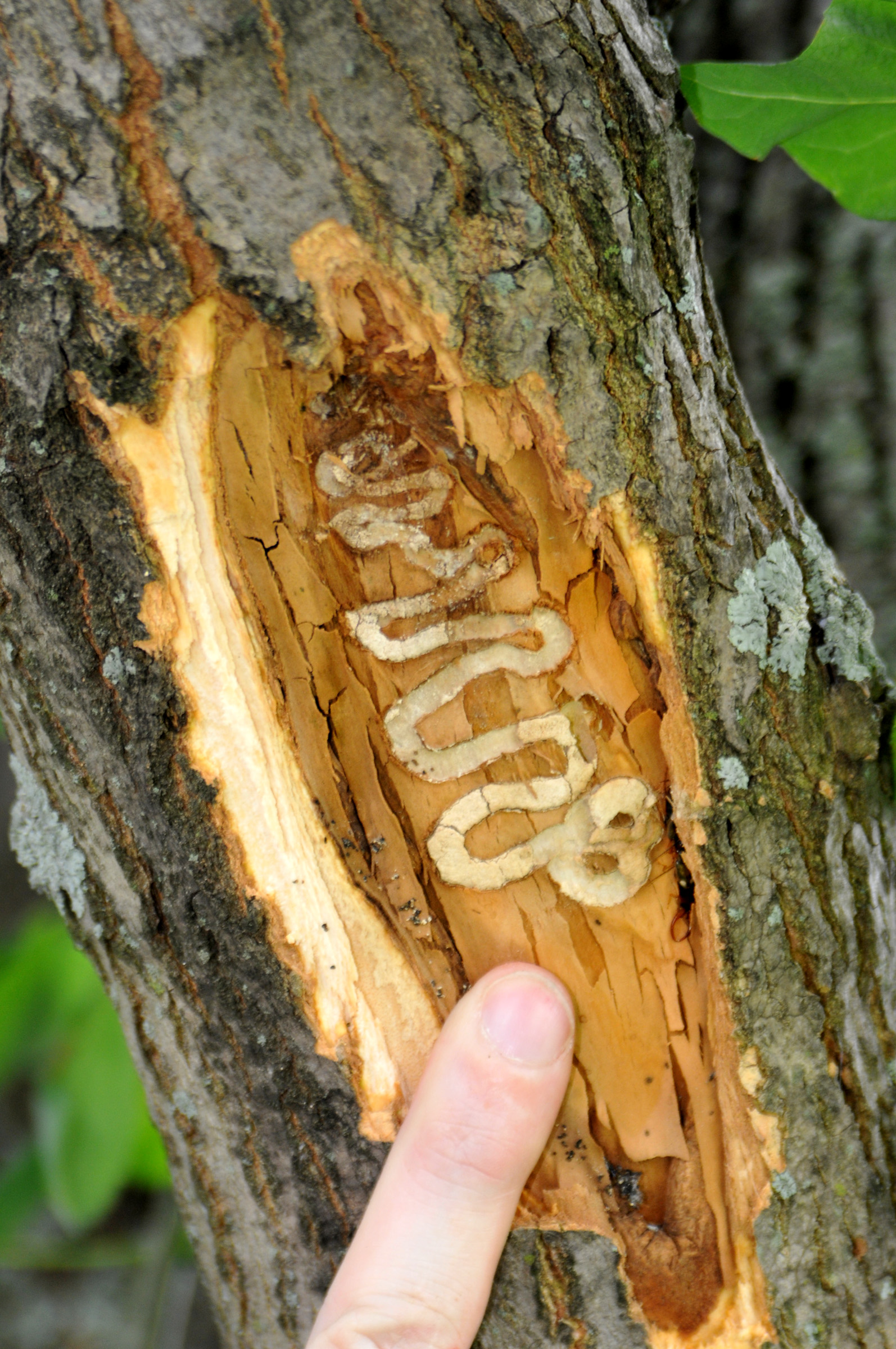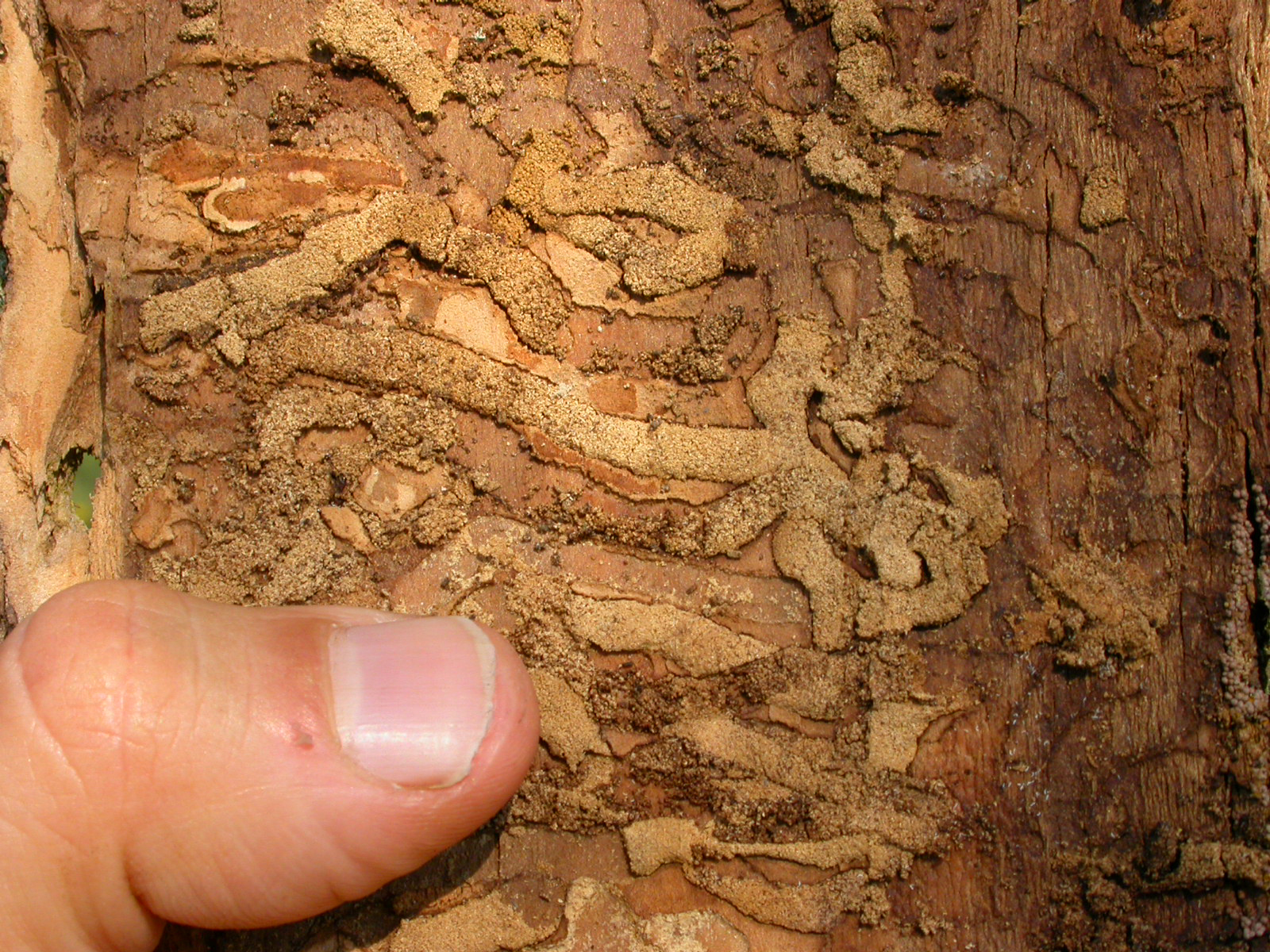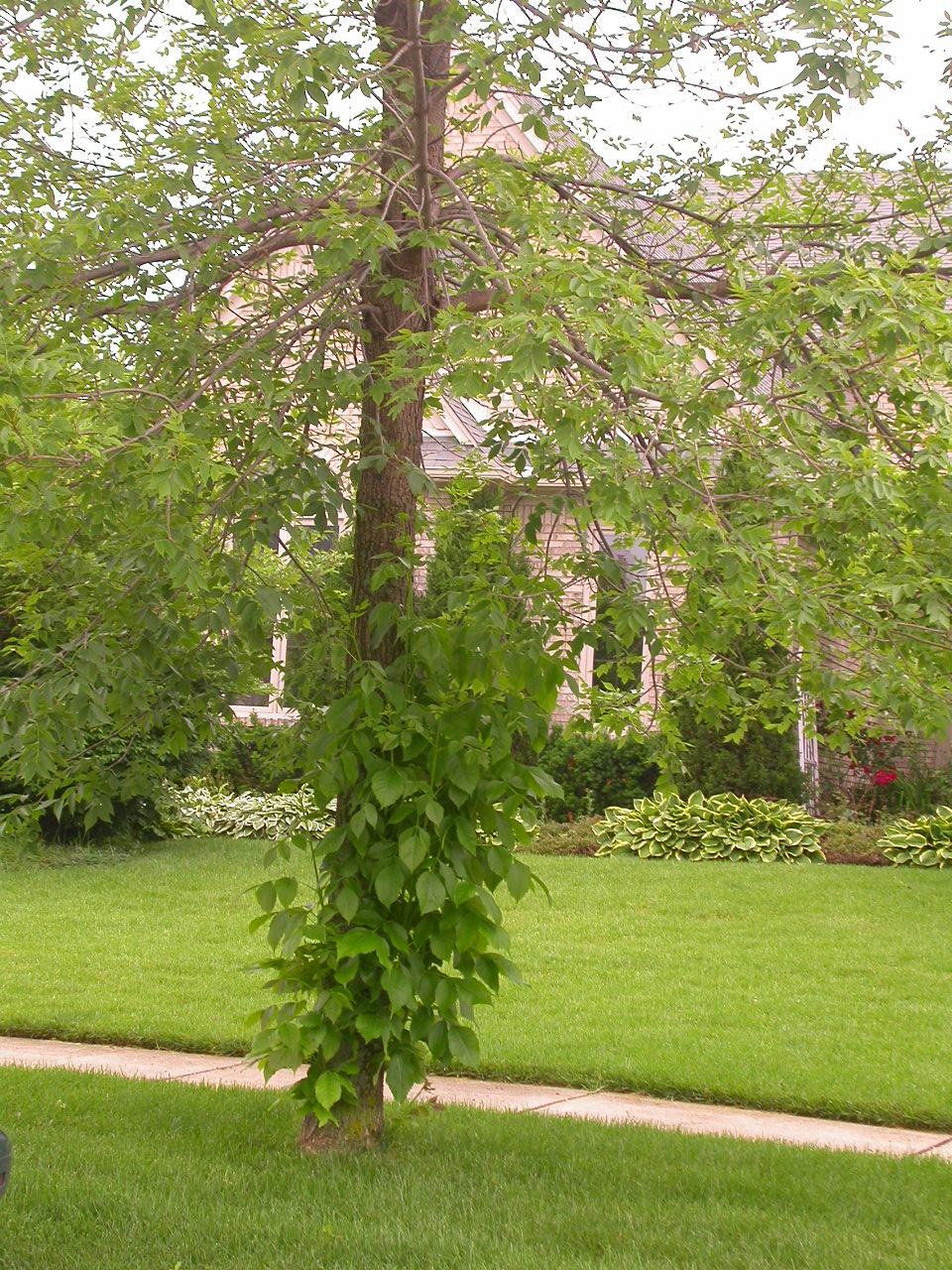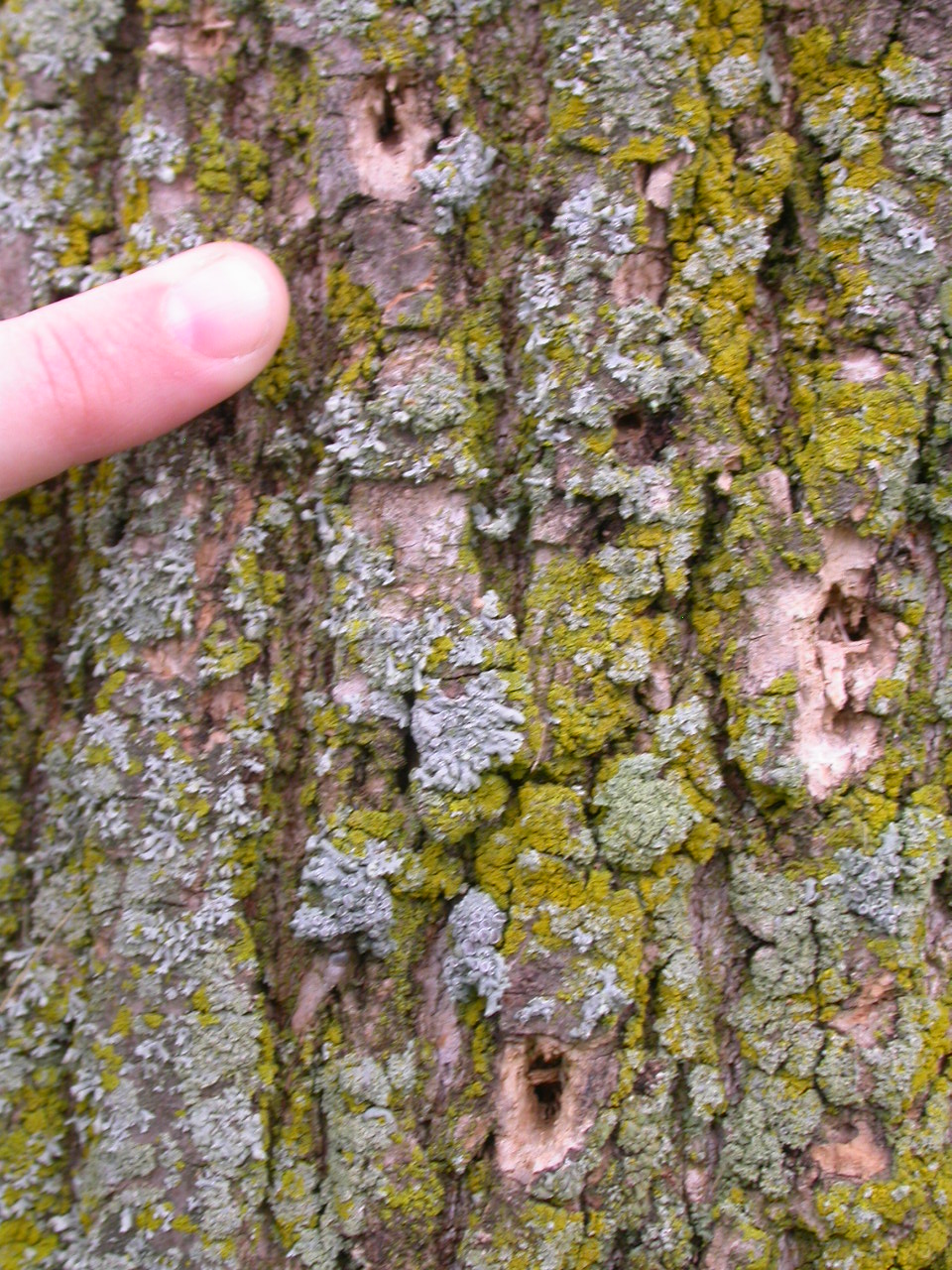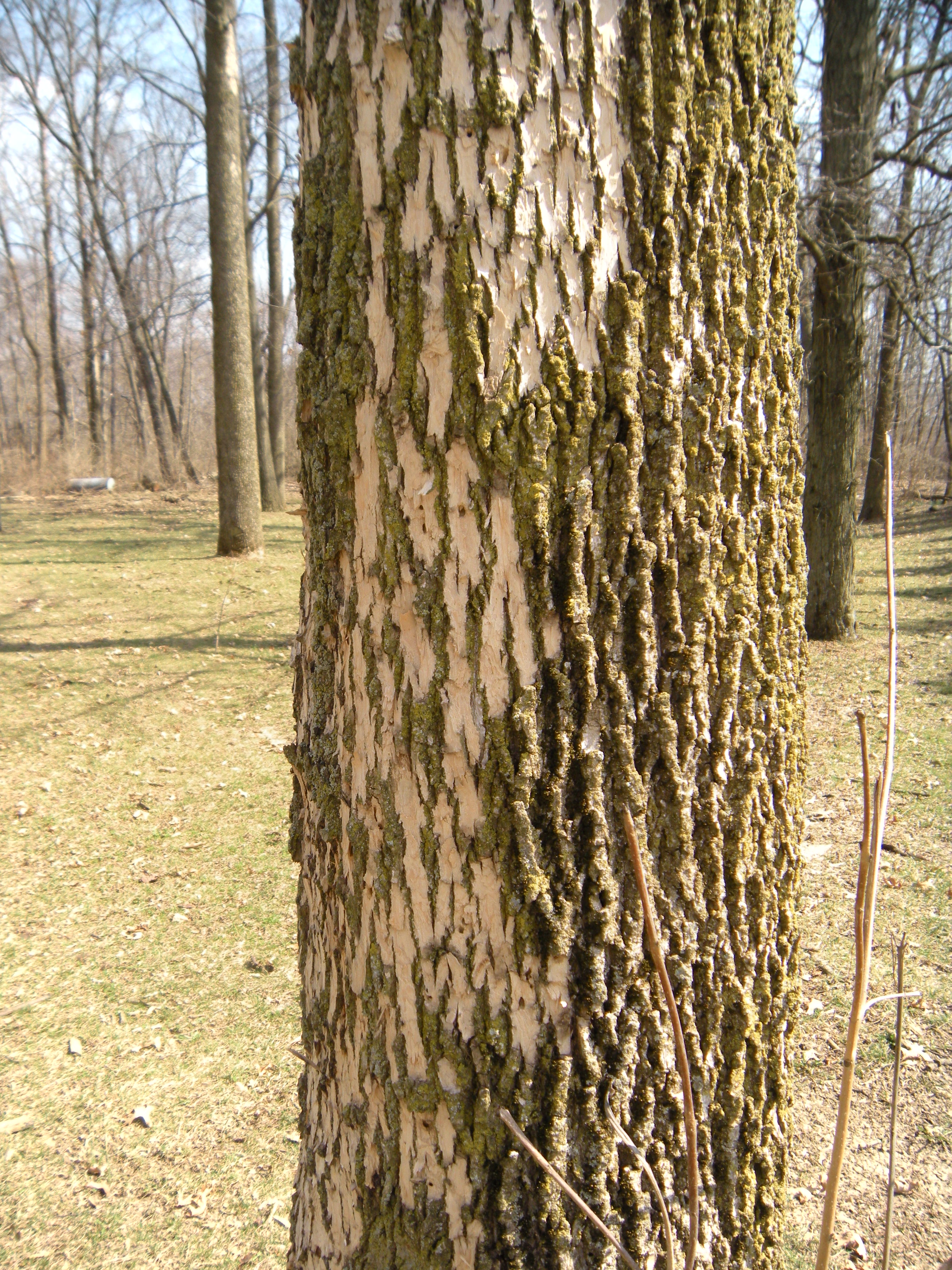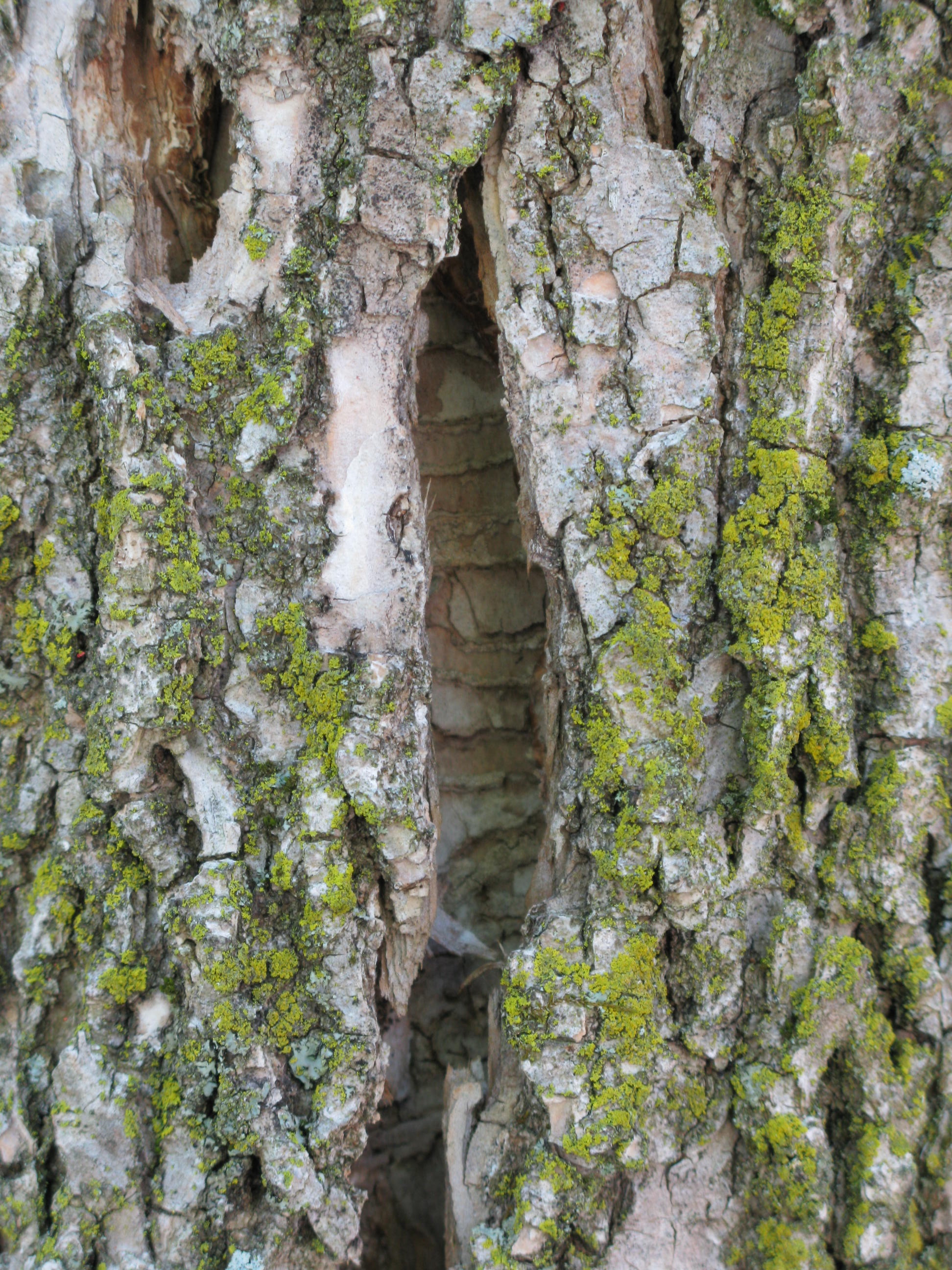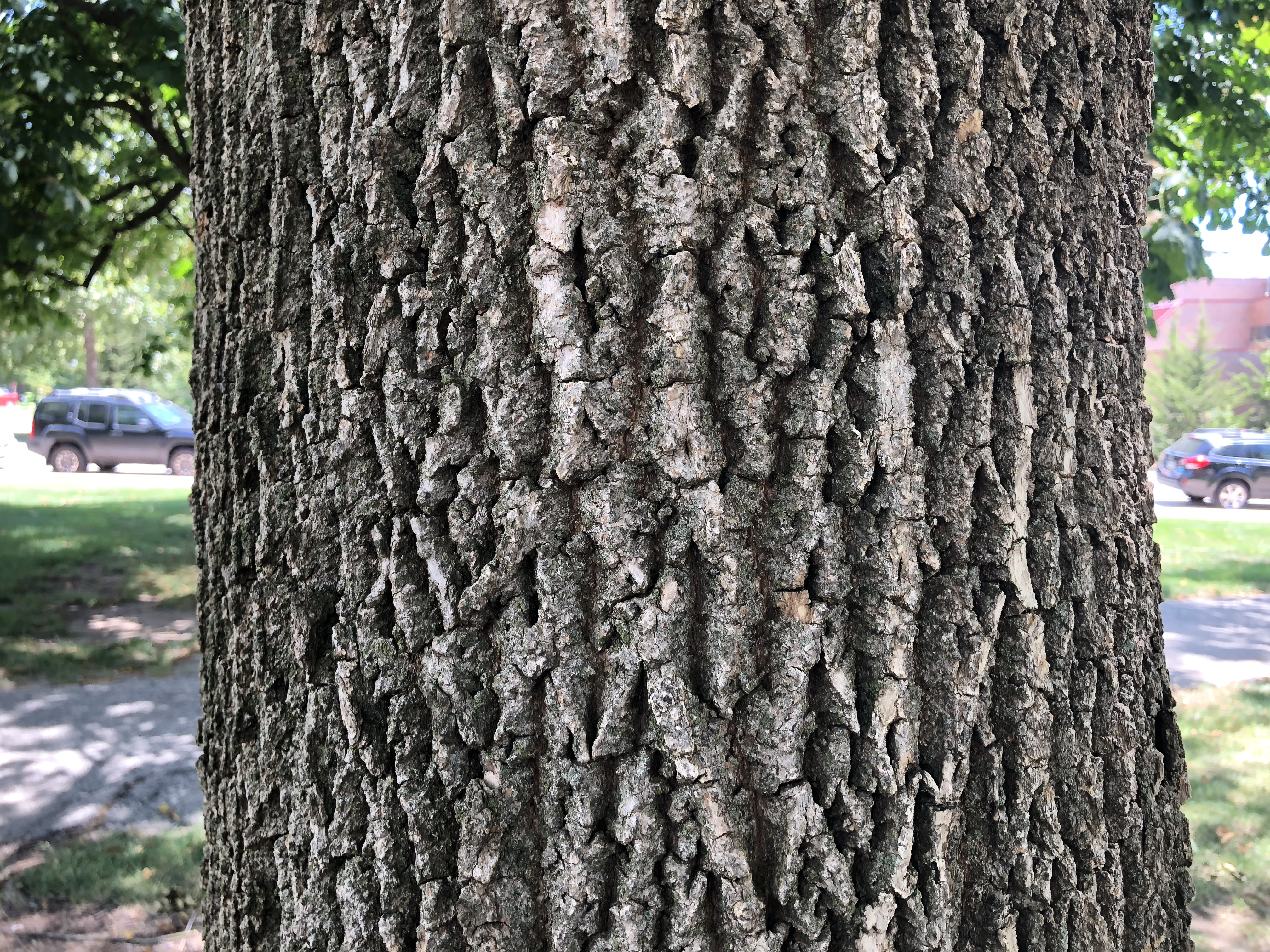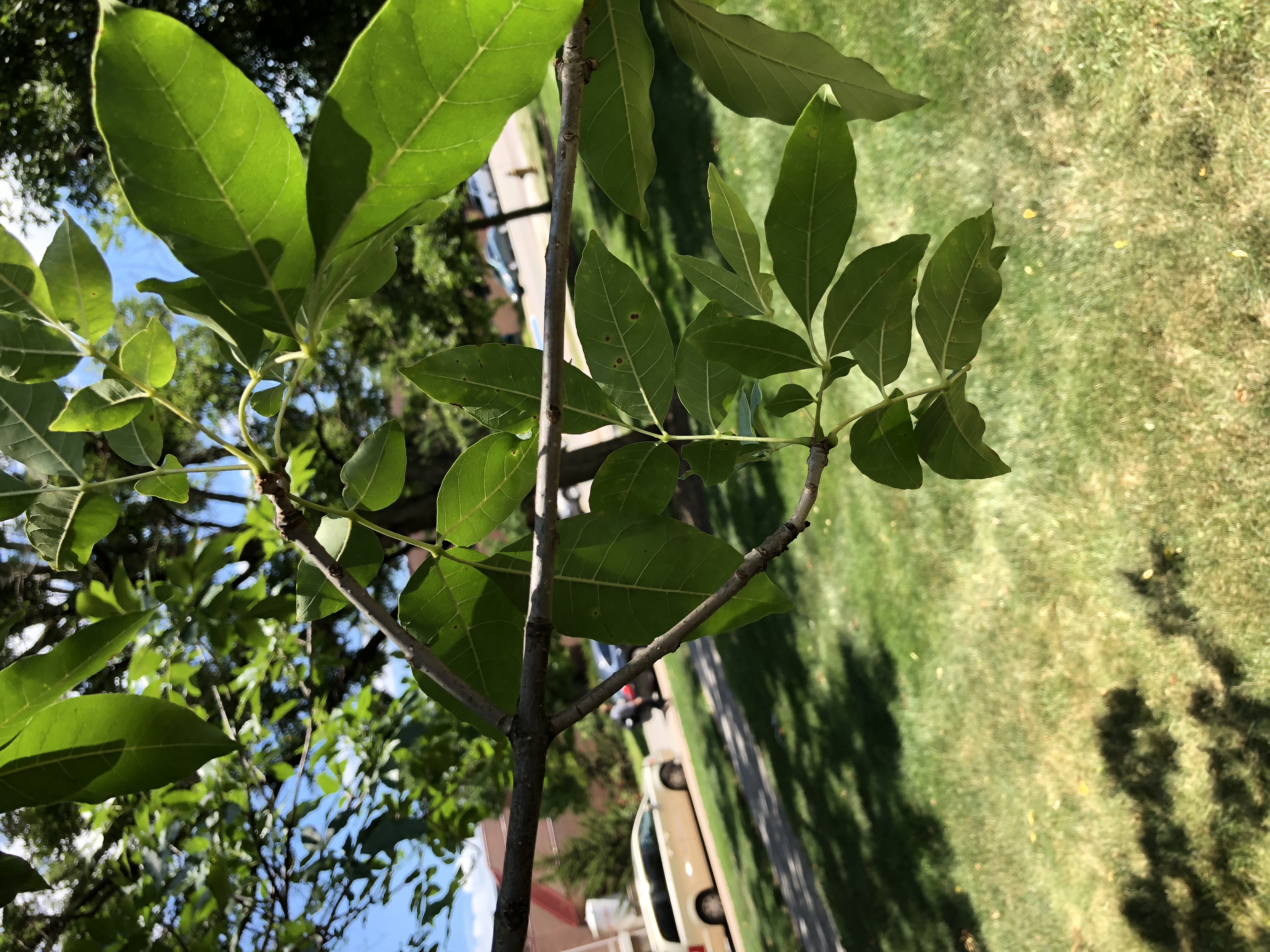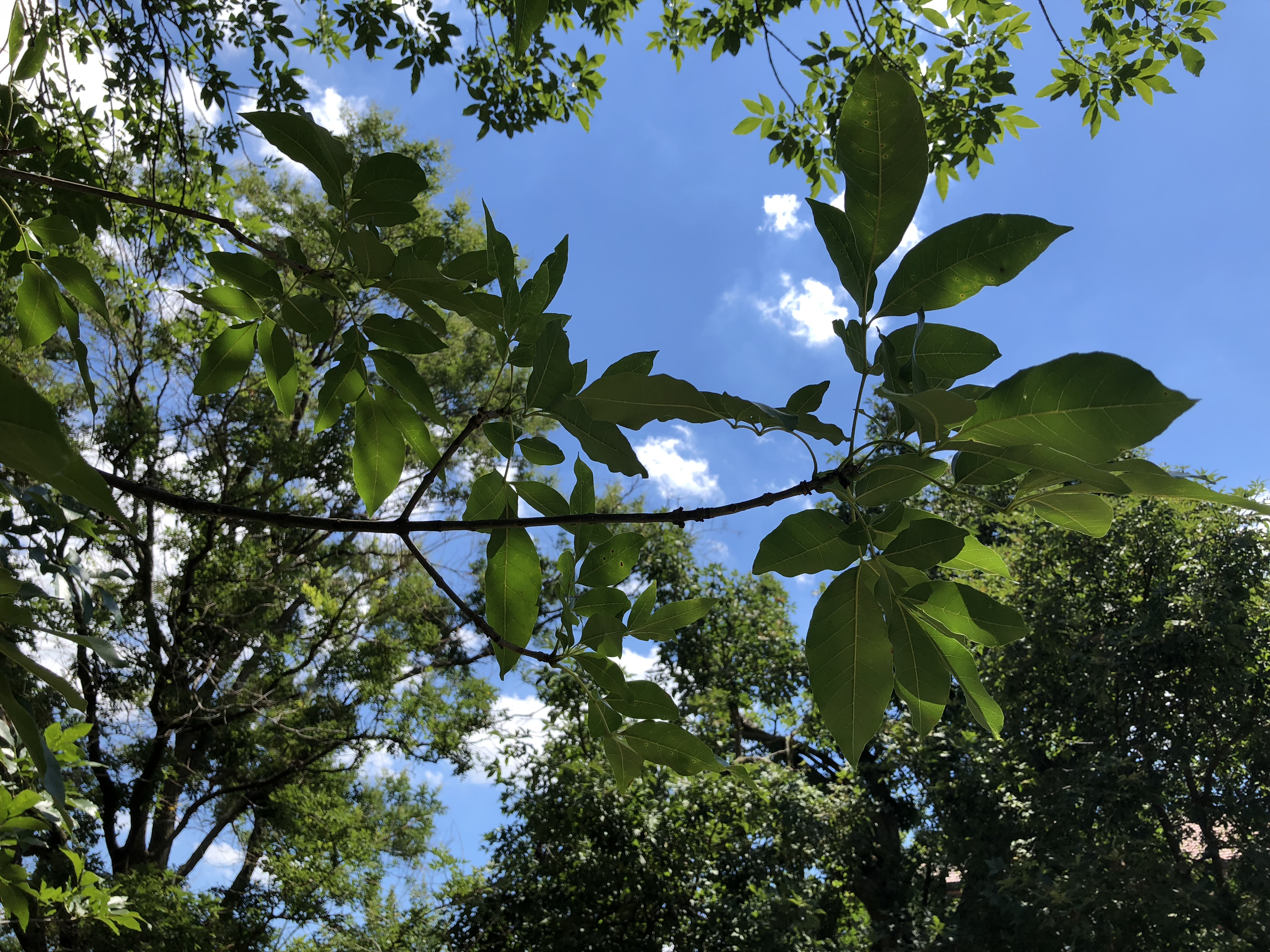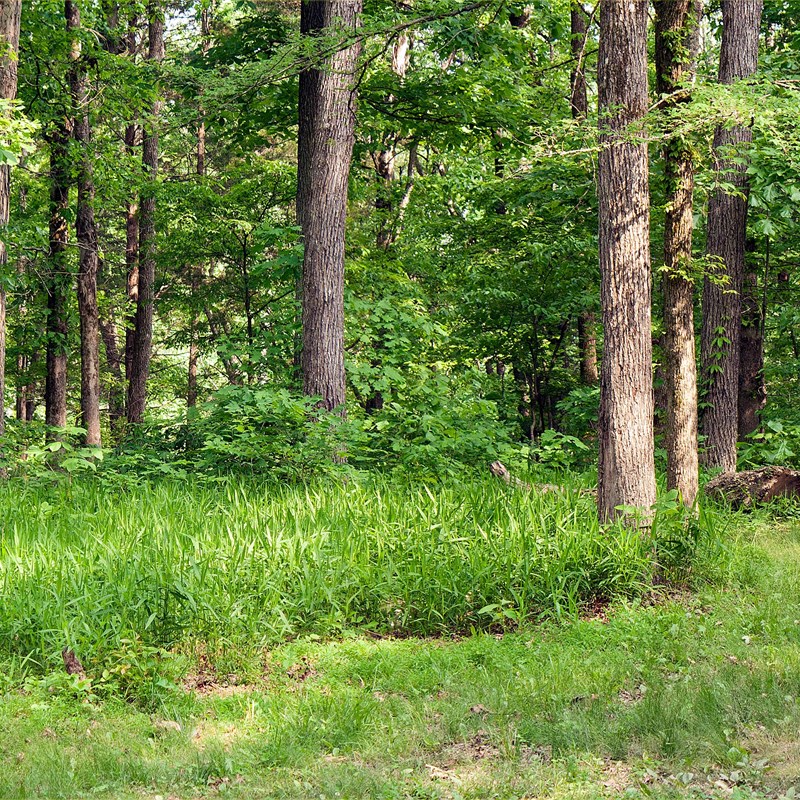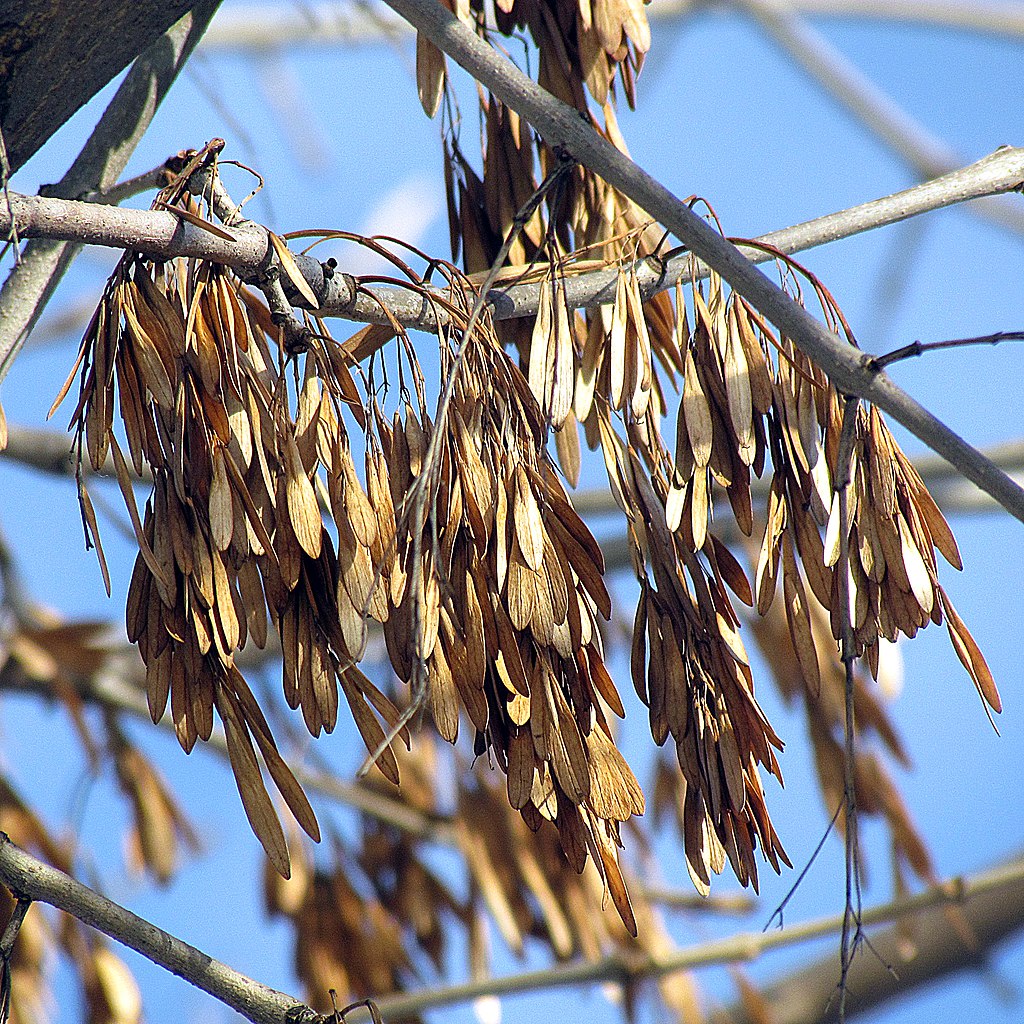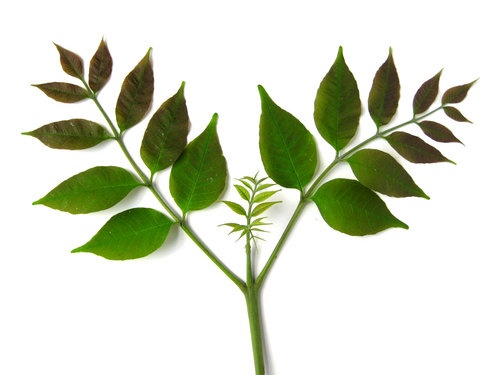Insect ID
Adult beetles are 1/3rd in. long and 1/16th in. wide and have rounded abdomens, slightly flat backs, and are bright metallic green.
Larvae are creamy white and have flattened, segmented bodies up to an inch long. They can be found under ash tree bark in association with Zig Zag galleries.
Look-a-like insects
Color. Just because it’s a green insect, doesn’t mean it’s EAB.Size. If it’s longer than ½ inch, it’s not EAB. If it’s larger than a dime, it’s too big to be emerald ash borer.
Shape. EAB is long and thin with a squared off head, a straight body, and a rear end that tapers to a blunt point. If the insect is rounded or looks pinched in in the middle, it’s probably not EAB.
Wings. Emerald ash borer, have hard shell-like wings on their backs that hide and protect their clear hindwings when they are resting. If you see clear wings on a resting adult IT IS NOT EAB.
The University of Nebraska has created an EAB Look-alikes chart you can use for a quick comparison of EAB and common insects in the Midwest.
Tree symptoms:
Dieback of leaves that starts in the upper third of the tree
Vertical splits in the bark
S-shaped or hair-pin turn shaped channels, often filled by a sawdust like material (frass)
D shaped exit holes about an 1/8th of an inch long (about the length of George Washington’s nose on a US quarter)
Heavy woodpecker activity. They may strip the grey exterior bark off leaving light or “blond” areas on the trunk or branches
Water sprouts (epicormics shoots) at the bottom of the tree’s trunk
Ash Tree Identification
Ash trees are simple to identify once you learn their key traits. Ash trees have:
Branches and leaves that grow opposite of each other just like your arms and legs. If the branches are staggered or alternate, the tree is not an ash tree.
Leaves that are pinnately compound. Pinnately describes the feather-like shape of the leaves and compound means that each individual leaf is made up of several smaller leaflets.
Seeds that are long and shaped like a paddle.
Diamond-patterned bark, although this may not be apparent in young trees.
